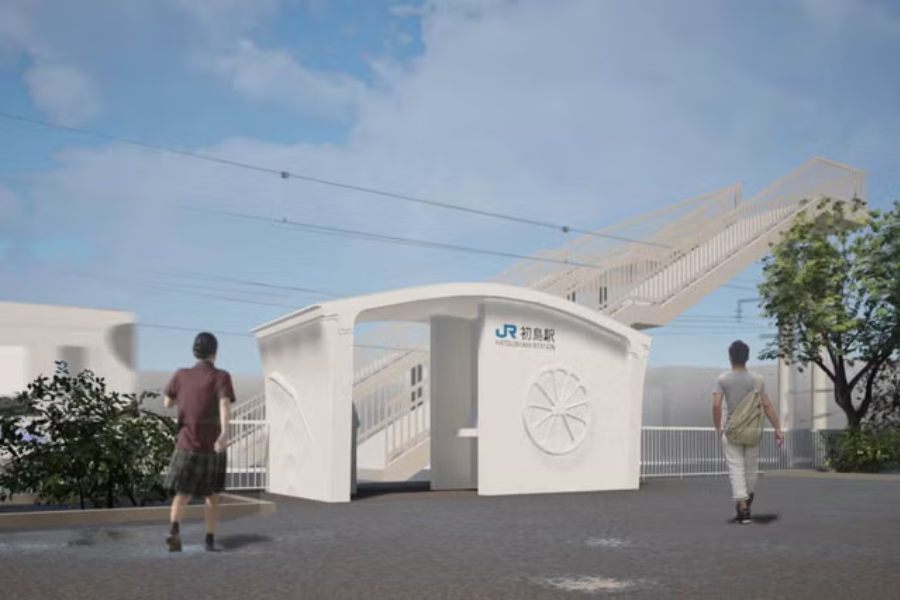Japan Builds World’s First 3D-Printed Railway Station in Just 6 Hours

Japan has achieved a groundbreaking milestone by constructing the world’s first 3D-printed railway station in a mere six hours, replacing an old wooden structure with a sleek, modern design in the rural town of Arida, located south of Osaka.
The new station, which resembles a compact garden shed, was built using 3D-printed mortar moulds that were pre-fabricated and delivered to the site by truck. The structure was then assembled overnight, strategically timed between the last train’s departure on Monday night and the first arrival on Tuesday morning, ensuring no disruption to the train schedule.
Standing 2.6 meters tall and covering an area of about 100 square feet, the finished station is constructed from reinforced concrete. It features minimalist aesthetics and is decorated with local motifs such as mandarin oranges and scabbardfish — symbols of Arida’s cultural and culinary heritage.
The project was led by West Japan Railway Company (JR West) in partnership with Japanese housing company Serendix. Officials noted that constructing the station traditionally would have taken over two months and cost nearly twice as much. In contrast, the 3D-printed method not only saved time and money but also addressed the challenges posed by Japan’s aging population and declining use of rural railways.
The new building, comprised of four parts including its walls and roof, is earthquake-resistant and designed to be as sturdy as reinforced concrete homes. While the external structure is complete, internal installations like ticket machines and card readers are still underway, with the station expected to open to the public in July 2025.
The old wooden station, which has served passengers for over 75 years since its construction in 1938, will be demolished once the new facility is fully operational.
Toshifumi Norimatsu, a 56-year-old local resident, shared mixed emotions about the change. “I’m a little sad about the old station being taken down,” he said. “But I would be happy if this station could become a pioneer and benefit other stations.”
The Hatsushima Station, located along the Kisei Line on the Kii Peninsula, is a small, unstaffed stop that connects travelers to places like Jinoshima — a remote island popular for camping and swimming. Though its usage has declined since its peak in the late 20th century, the new development reflects a broader push toward innovation and efficiency in rural infrastructure.
The station’s components were printed and reinforced over seven days at a facility in Kumamoto Prefecture and transported over 800 kilometers to Arida. Local residents gathered to witness the overnight assembly, marking a historic moment for railway innovation and community development.
